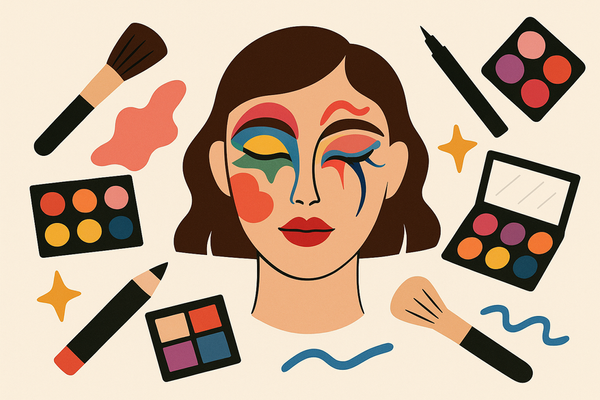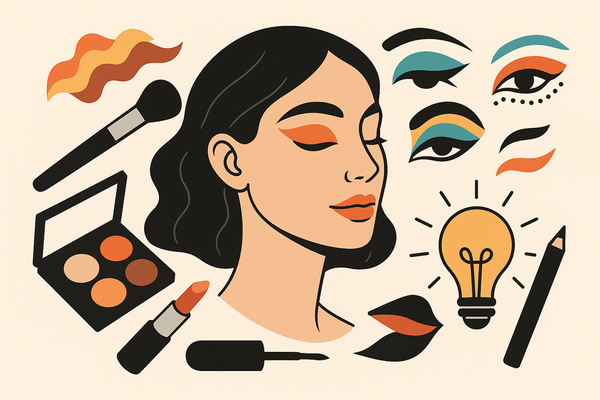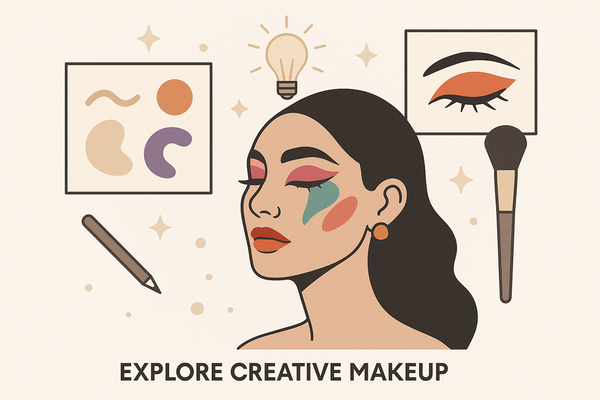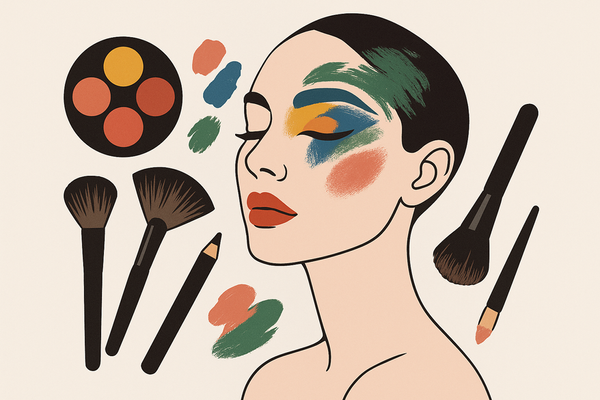Understanding Makeup Score: Your Guide to Safer and Skilled Beauty
Learn how understanding makeup score can elevate your beauty routine with safer products, improved skills, and innovative AI tools for personalized results.
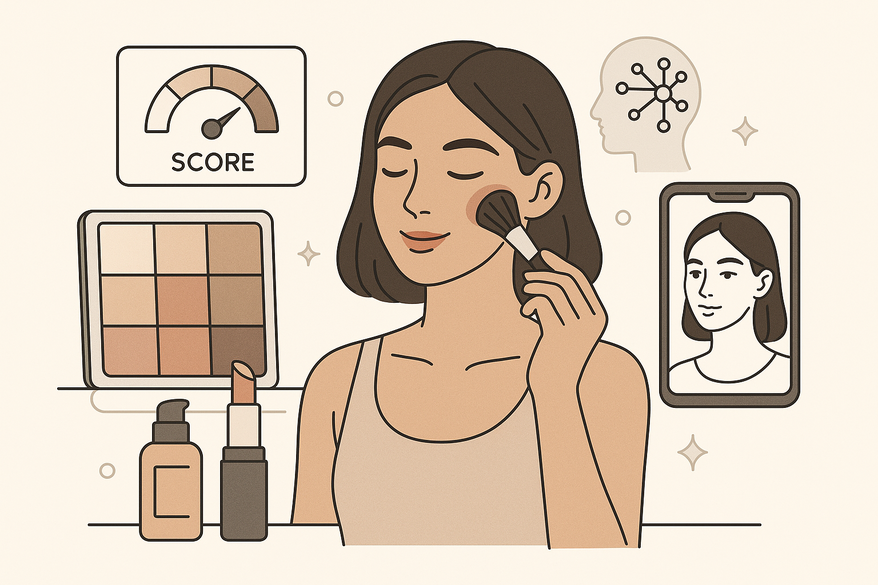
Estimated reading time: 8 minutes
Key Takeaways
- Makeup score evaluates both product safety and application quality.
- Core components include ingredient safety, transparency, blending, color matching, longevity, and environmental impact.
- A clear, step-by-step guide helps you prioritize safe products, master blending, refine techniques, and maintain your tools.
- AI integration offers real-time feedback, personalized recommendations, and virtual try-ons.
- Combining traditional methods with an AI makeup generator leads to data-driven mastery.
Table of Contents
- What Is a Makeup Score?
- Components of a Makeup Score
- Improving Your Makeup Score: A Step-by-Step User Guide
- The Role of AI in Makeup
- How AI Makeup Generators Enhance Your Makeup Experience
- Using an AI Makeup Generator: A Step-by-Step Guide
- Integrating Traditional Techniques with AI Support
- Conclusion
What Is a Makeup Score?
Makeup score is a metric that rates cosmetic products or applications based on safety, performance, artistry, and sustainability.
1. Product-Focused Score
- Ingredient analysis: Reviews each component for risk levels.
- Risk categories: Allergenic potential, irritancy, carcinogenicity, environmental impact.
- Benefit: Empowers informed purchases of safer cosmetics.
- Source: Yuka evaluation of cosmetic products
- Source: EWG Skin Deep ratings
2. Application-Focused Score
- Artistry and technique: Rates blending quality, color matching, and precision.
- Outcome: Provides benchmarks for skill improvement and creativity.
Why Users Benefit
- Make smarter product choices based on trustworthy ratings.
- Track and improve makeup artistry over time.
Components of a Makeup Score
A thorough understanding of makeup score relies on multiple components. Each factor shapes your overall rating and highlights areas for growth.
Ingredient Safety
- Definition: Assessment of health risks like endocrine disruption, allergenicity, and toxicity.
- Impact: Reduces long-term skin issues and health concerns.
- Source: Yuka evaluation of cosmetic products
- Source: EWG Skin Deep ratings
Product Transparency
- Definition: How openly brands share ingredient lists and manufacturing methods.
- Benefit: Builds trust and helps you avoid hidden irritants.
- Source: Pleblit beauty industry scorecard
Blending Techniques
- Definition: Smooth transitions of foundation, eyeshadow, and blush.
- Tip: Use high-quality brushes and sponges plus regular cleaning.
Color Matching
- Definition: Choosing foundation or concealer that aligns with your undertones under natural light.
- Tip: Swatch three shades on your jawline to find the perfect match.
Application Skill
- Definition: Precision in contouring, symmetry, and lining.
- Outcome: Sharp, professional-level makeup looks.
Longevity & Finish
- Definition: How long makeup lasts and its texture (dewy, matte, satin).
- Tip: Use primers and setting sprays to boost wear time.
Environmental Impact
- Definition: Ecological footprint of ingredients and packaging.
- Benefit: Supports sustainable beauty and reduces waste.
- Source: Pleblit beauty industry scorecard
- Source: Yuka evaluation of cosmetic products
Improving Your Makeup Score: A Step-by-Step User Guide
Quick Steps: Adopt these actionable tips to boost your makeup score.
- Prioritize Safe Products
- Tool tip: Scan barcodes with the Yuka app or the EWG Skin Deep database.
- Avoid high-risk ingredients like parabens, phthalates, and formaldehyde releasers.
- Master Blending
- Recommended tools: Beauty blender, synthetic foundation brushes (e.g., Sigma F80).
- 3-minute drill: Dot foundation on five points, buff in circular motions, then blend outward to jawline and hairline.
- Perfect Color Matching
- Test in daylight: Swatch three shades on your jawline.
- Use color-correcting concealers: green for redness, peach for dark circles.
- Refine Application Techniques
- Watch top-rated tutorials on contouring and brow shaping.
- Practice 15 minutes daily for two weeks to build muscle memory.
- Invest in Quality
- Choose brands with high transparency scores via the Pleblit scorecard.
- Look for full ingredient lists and eco-friendly packaging.
- Maintain Tools
- Weekly: Rinse brushes with a gentle cleanser.
- Monthly: Deep-clean sponges with warm water and mild soap.
The Role of AI in Makeup
Platforms like Makeup Check AI leverage computer vision and ingredient analysis to refine your makeup score and ensure product safety in real time.
How It Works
- Landmark detection: Algorithms map facial features such as eyes, lips, and cheekbones.
- Color analysis: Computer vision evaluates pigment distribution and blend quality.
- Score output: Delivers an objective makeup score based on application and product safety.
For deeper insights, explore our Rate My Makeup Online guide and our Personalized Makeup Tips AI overview.
How AI Makeup Generators Enhance Your Makeup Experience
- Personalized Recommendations – Matches shades and products to your skin tone, texture, and facial structure.
- Real-Time Feedback – Highlights areas for improved blending smoothness, symmetry, and coverage.
- Simulated Looks – Virtual try-ons before you commit to a product.
- Ingredient Analysis – Warns about allergens, irritants, and carcinogens.
- Trend Tracking – Suggests trending styles tailored to your preferences.
Using an AI Makeup Generator: A Step-by-Step Guide
- Upload Photo or Live Camera – Use a well-lit, neutral background and remove glasses or hair.
- Set Preferences – Input skin concerns (dryness, sensitivity) and color likes/dislikes.
- Receive Analysis – Colored heatmaps show blending gaps, uneven tones, and high-risk areas.
- Get Recommendations – Pop-up cards detail product suggestions and technique tips.
- Preview and Experiment – Toggle a before/after slider to compare your look with AI suggestions.
- Implement Feedback – Integrate AI tips: blending drills, shade tweaks, and tool swaps.
Tips & Precautions
- Lighting: Consistent illumination yields more accurate results.
- Privacy: Check the app’s policy on image storage and data usage before uploading.
Integrating Traditional Techniques with AI Support
- Blend Practice and AI Drills – Do your daily blending routine, then use AI feedback to correct mistakes.
- Pre-Purchase Ingredient Scans – Confirm product safety with AI, then apply pro application tips.
- Local Lighting Adaptation – Let AI pick your shades, then test them in your home or office light.
Case Study Example
User A struggled to find her true undertone. She used an AI makeup generator to analyze her skin, paired it with professional contour tutorials and a focused blending drill, and achieved a 20% higher application-focused makeup score within two weeks.
Conclusion
Understanding makeup score empowers you to choose safe, effective products and sharpen your artistry. By mastering ingredient safety, transparency, blending, color matching, and more, you can pinpoint where to focus your efforts. Pairing traditional techniques with an AI makeup generator delivers personalized, data-driven insights that transform your routine from guesswork to mastery.
Call to Action
Try an AI makeup generator today to boost your makeup score and discover your best look. Embrace innovation for a healthier, more confident beauty journey.
FAQ
- What factors contribute to a makeup score? Ingredient safety, product transparency, blending techniques, color matching, longevity, and environmental impact.
- How can I scan products for safety? Use the Yuka app or the EWG Skin Deep database to check ingredients and risk levels.
- Are AI makeup generators accurate? They use computer vision and ingredient analysis to provide objective feedback, but results improve with consistent lighting and high-quality photos.
- How often should I clean my brushes? Rinse daily or weekly with gentle cleanser and deep-clean sponges monthly to maintain hygienic, seamless application.
- Can I combine AI feedback with manual practice? Absolutely. Use AI drills to identify mistakes, then refine your technique with hands-on tutorials and blending routines.

